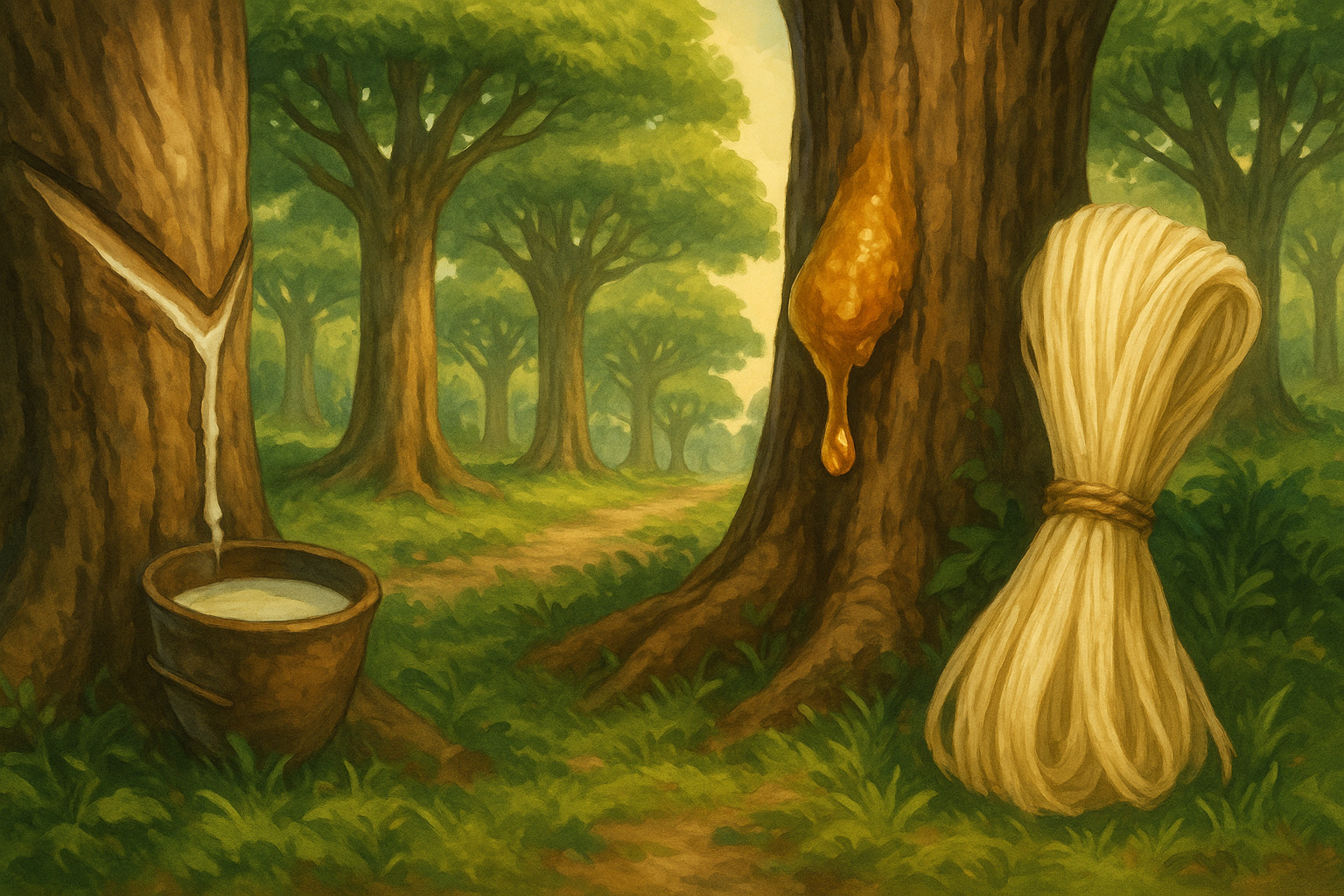Trees offer more than just wood. Many species provide valuable materials without cutting them down, ensuring the tree remains alive and productive for years. These non-timber products have been vital to human economies for centuries, offering resources for industries, medicine, crafts, and daily life. Latex, resins, and fibers stand out among these products for their versatility and economic value.
Latex: The Lifeblood of Rubber
Latex is a milky fluid found in certain plants, most notably in the rubber tree Hevea brasiliensis. The latex is tapped by making precise incisions in the bark, allowing the fluid to flow without harming the tree’s overall health.
Key uses of latex include:
- Natural rubber production for tires, footwear, and industrial components.
- Medical supplies such as gloves, catheters, and elastic bands due to its flexibility and resistance to water.
- Adhesives and coatings where durability and elasticity are essential.
Latex collection is a labor-intensive process. The tapping must be done in the early hours of the morning when the flow is optimal. Over-tapping can damage the tree, so skilled harvesters follow strict schedules to maintain long-term productivity. In many tropical countries, latex tapping provides sustainable income for rural communities.
Resins: Nature’s Protective Sealants
Resins are viscous substances secreted by trees, often as a defense against injury or pests. They harden upon exposure to air, forming a protective barrier. Coniferous trees like pines are classic resin producers, but tropical hardwoods also yield high-quality resins.
Popular types and their applications:
- Pine resin for producing turpentine and rosin used in varnishes, paints, and soap manufacturing.
- Copal resin traditionally used in incense, varnish, and as a base for natural paints.
- Frankincense and myrrh valued for their fragrance and ceremonial uses, as well as medicinal properties.
Resin tapping is an ancient practice. Workers cut shallow grooves in the bark to allow the resin to ooze out, which is then collected periodically. The process is designed to be minimally invasive, allowing trees to continue producing for decades. Resin not only supports local economies but also plays a role in cultural traditions, especially in regions where incense and plant-based medicines are part of daily life.
Fibers: From Bark to Textile
Tree-derived fibers have been used for rope-making, weaving, and even paper production. These fibers come from various sources, including the inner bark, leaves, and seed pods.
Common tree fiber sources:
- Coir from coconut husks used in mats, brushes, and ropes.
- Bast fibers from species like the paper mulberry for traditional textiles and handmade paper.
- Kapok from the seed pods of Ceiba pentandra for pillow stuffing and insulation due to its lightweight, water-resistant qualities.
Harvesting fibers requires knowledge of the plant’s growth cycle. For example, bark fibers are collected without killing the tree, often by stripping only a section so the plant can heal and continue to grow. In many traditional societies, these fibers are woven into intricate patterns that reflect cultural identity.
Sustainability and Economic Value
Non-timber forest products like latex, resins, and fibers are a bridge between environmental conservation and livelihood support. Harvesting methods are designed to keep the trees alive and productive, which in turn maintains forest cover, biodiversity, and carbon storage.
Benefits of non-timber harvesting:
- Environmental protection by reducing the need for clear-cut logging.
- Steady income for communities without depleting natural resources.
- Cultural preservation by keeping traditional skills and artisanal crafts alive.
Global demand for eco-friendly and renewable materials is increasing, which creates market opportunities for these products. From sustainable fashion using plant-based fibers to bio-based adhesives made from resins, industries are finding ways to substitute synthetic materials with natural alternatives.
Looking Ahead
The potential for non-timber products extends beyond traditional uses. Scientific research is uncovering new applications, from biodegradable plastics made with latex to natural preservatives derived from resins. The expansion of fair-trade and organic certification systems also helps small producers connect with ethical markets, increasing their income and supporting forest stewardship.
By valuing latex, resins, and fibers not as secondary products but as primary economic drivers, communities can maintain healthy forests while benefiting from them year after year. The relationship between people and trees becomes one of mutual benefit, where harvest does not mean destruction but rather a cycle of renewal.
